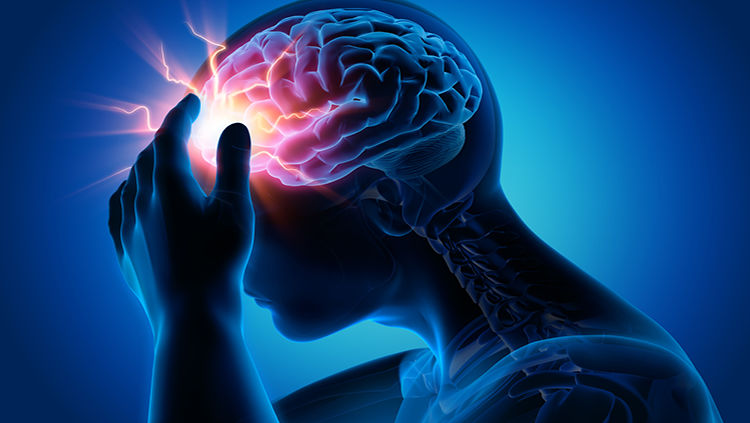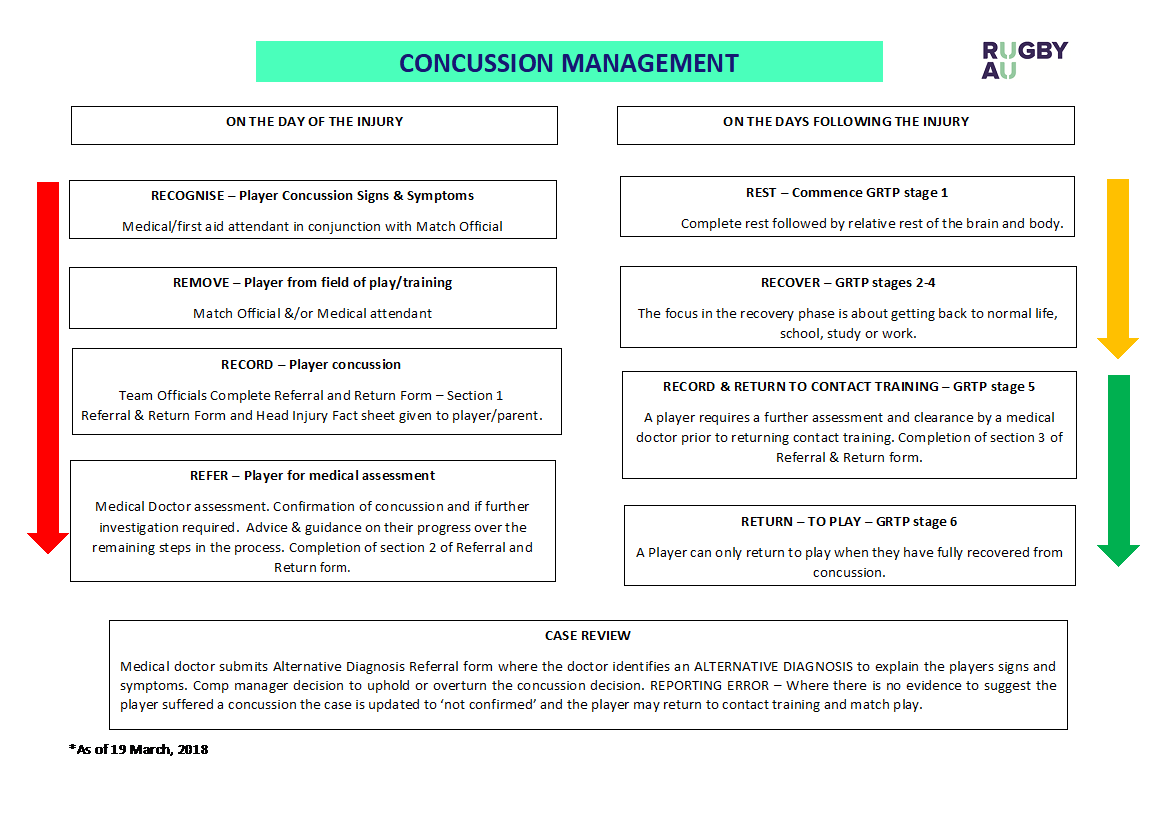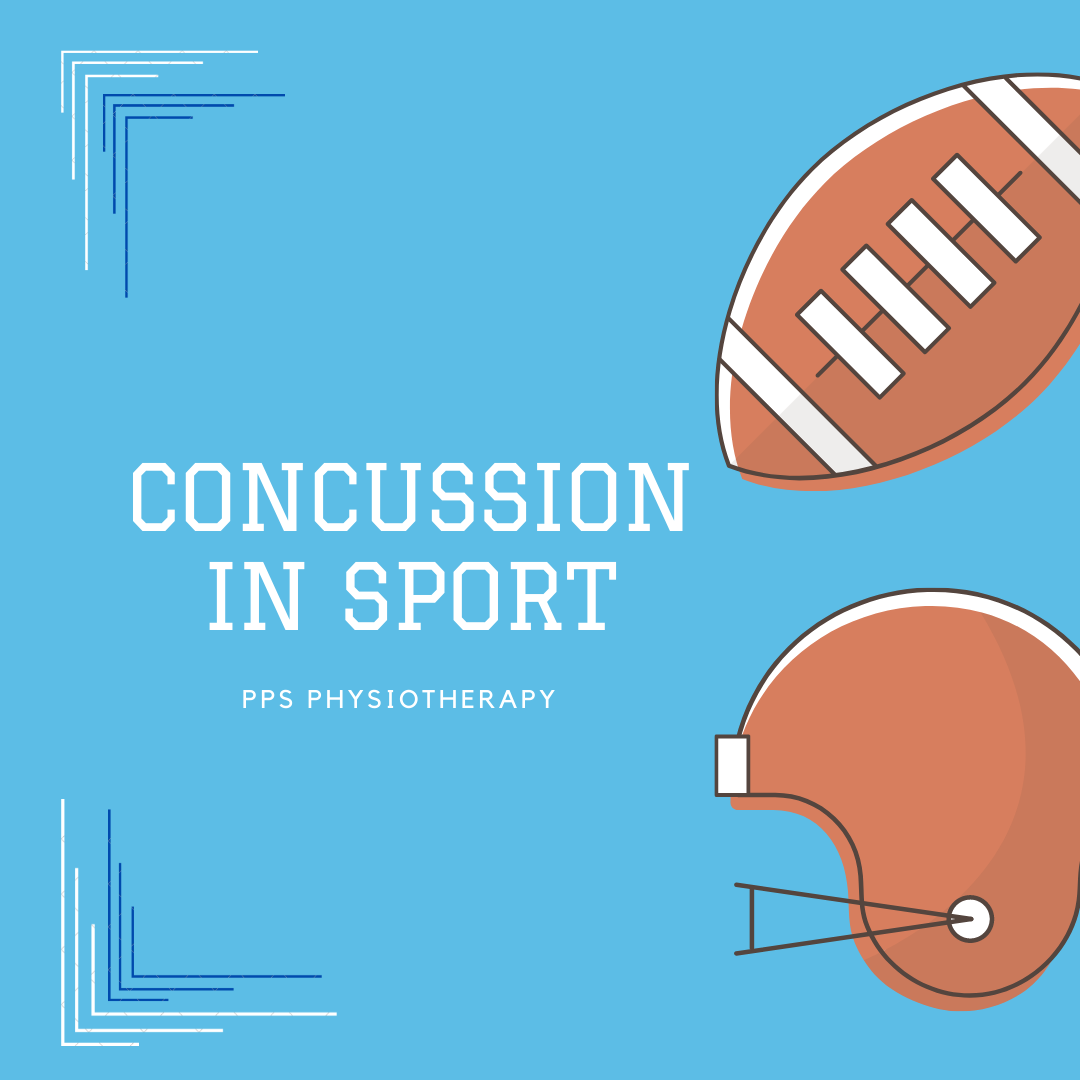Concussion is a hot topic right now in the sporting world. All the major sporting codes are talking about how we can best prevent and manage these injuries. Do you have a plan for if you or someone you know sustains a concussion this sporting season?

What is a Concussion?
A concussion is a type of traumatic brain injury induced by bio mechanical forces to the head or anywhere on the body that transmits an impulsive force to the brain. This could be from either a direct blow to the head, such as a head knock or a tackle, whereby strong forces are transmitted to the head resulting in an acceleration/deceleration mechanism of injury – similar to a whiplash injury. Concussions cause short lived neurological impairments that can happen at the time of the injury or eventuate in the hours after a collision or head knock. The symptoms of concussion are most often temporary and resolve without medical intervention, however the long-term effects of concussions or multiple head injuries is still being researched.
Concussions are most prevalent in sports where there is a high level of physical contact, for example rugby league, rugby union, boxing and mixed martial arts. However, it is not exclusive to these sports alone and we certainly see the occasional concussion in netball, soccer, gymnastics and even the school playground. Sometimes recognizing the symptoms of a concussion is difficult as they can present quite differently between individuals. It is therefore crucial to be vigilant around teammates, children or athletes who may be at risk of sustaining a concussion. Being able to recognize the symptoms of a concussion is vital for the correct management and treatment of the player, and to prevent any further injury.
If you, a teammate or a child you’re watching play sport sustains a concussion during sport it is important to be able to RECOGNISE the symptoms and REMOVE them from play immediately.
Symptoms of a concussion may include:
- Headache
- Loss of memory (amnesia)
- Confusion
- Nausea or vomiting
- Fatigue and drowsiness
- Blurred vision or “seeing stars”
- Delayed responses to questioning (i.e. forgetfulness)
- Irritability or personality changes
- Neck pain
It is important to note that loss of consciousness or being “knocked out” does NOT always occur when someone sustains a concussion. The above symptoms may be present at the time of a head knock or collision, however sometimes they may develop over time. As a parent or caregiver, coach or friend, please know and understand the signs and symptoms to watch out for in the hours following a head injury and be aware of when to seek further medical advice or present to the emergency department.
Worsening symptoms may include:
- Increasing neck pain or severe headaches
- Increasing confusion, agitation or irritability
- Repeated vomiting
- Seizures or convulsions
- Weakness, tingling or burning sensations in the extremities
- Deteriorating consciousness
- Double vision
Once a player has sustained a concussion and has been removed from play, they must be referred to a Doctor or qualified health professional for further assessment. That health professional will then be able to run through a battery of tests to determine the severity of the concussion and can recommend the appropriate management.
What should I do after sustaining a concussion?
Rest is the most important thing to do after a concussion. As concussion is a brain injury, the brain must be rested for a minimum of 24-48 hours or until symptoms have completely resolved. This includes rest from school and work activities, as well as any other leisure activities and sports or exercise. It is recommended that a player reduces screen time too – yes, that means no computer games, phone, tablet or video games! Following an appropriate period of rest, a gradual return to normal daily activities including school, work and leisure can begin, so long as there are no worsening of symptoms.
When returning to sport it is crucial to ensure a gradual and progressive approach is taken. Light exercise can begin once all activities of daily living are able to be completed without any symptoms (e.g. headaches, dizziness, fatigue, disorientation). The next step is return to basic, sport-specific, non-contact drills before incorporating more complex activities. Full contact practice and subsequent match play can resume after the player has been cleared by a medical practitioner. Typically this process can take 3-4 weeks, however some individuals will need to take a longer time off sport if their symptoms do not completely resolve. If the player is under the age of 18, Rugby Australia protocols insist that they are not to return to contact sport for minimum of 19 days.

If you would like to read more about concussion guidelines specific to your sport you can visit the following links:
Rugby Union
https://www.world.rugby/the-game/player-welfare/medical/concussion/concussion-guidelines
AFL
PRECEDENT INFORMATION PAGE (afl.com.au)
References:
- Elkington, L., & Hughes, D. (2019). ‘Concussion In Sport Australia Position Statement’ – Australian Institute of Sport and Australian Medical Association position statement on concussion in sport. Medical Journal Of Australia, 206(1). doi: 10.5694/mja16.00741
- Rugby Australia publication – ‘Concussion Procedure (Rugby Public-Standard Care Pathway)’
- Sports Medicine Australia. (2018). Concussion in Sport Policy. New South Wales: Sports Medicine Australia.

